February 18-24, 2024
Starting to Feel It

This week of mixed weather ended on a bright note with several days of sun and warm temperatures.

There's a lot to report this week, but before we dive in, please take a moment to help support the newsletter with a paid subscription. Or consider making a donation using the button below. Thank you for enjoying and supporting the newsletter.

Week in Review
Everywhere we look, the natural world is waking up!
Yes, things are still pretty quiet, but this is the first week that there has been a bunch of new sightings and notable changes.
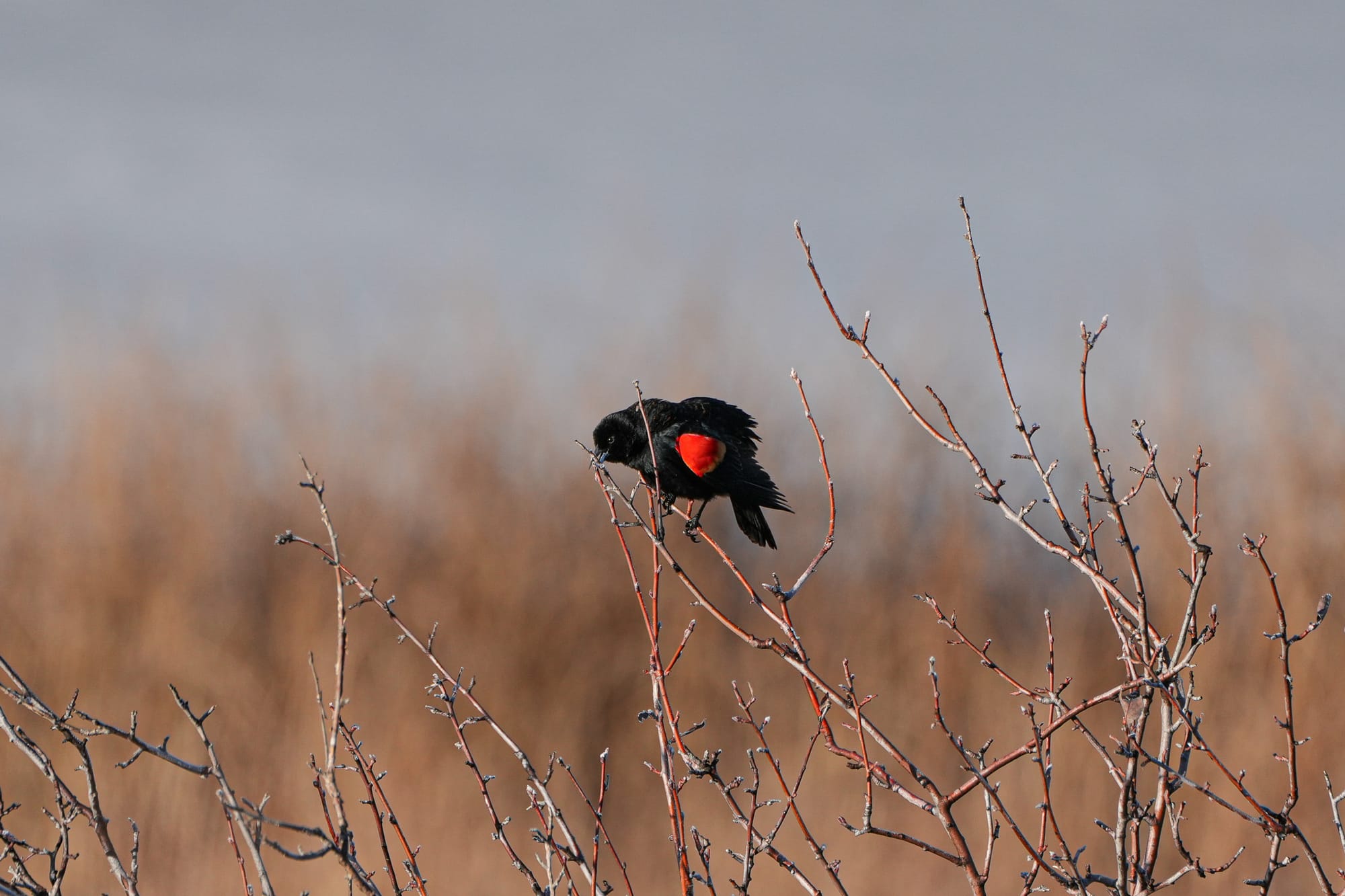
For example, I saw my first pair of Canada geese on February 4, but as I drove around the valley on February 23, I noticed many pairs and small groups of geese gathered on small ponds, and along the banks of the Methow River. I think I was even seeing both the large geese that breed locally (subspecies moffitti), as well as smaller subspecies that only migrate through our area.
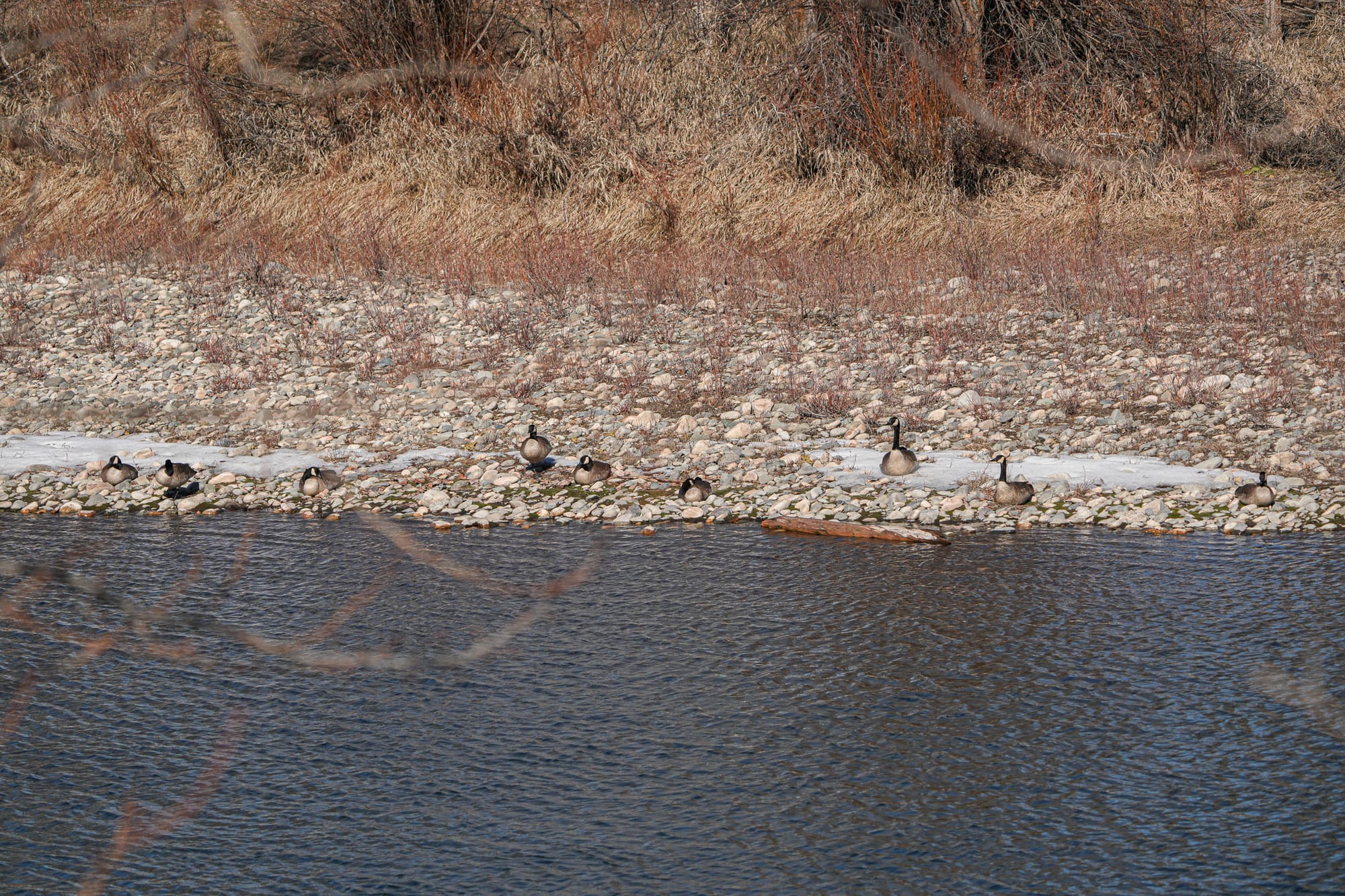
Dana Visalli also reported four western bluebirds returning to his property and checking out nestboxes on February 23. Over the years, Dana has recorded them arriving anytime between late January and early March, but it's still going to take a month or more until they're common.
While the bluebirds fit into an expected pattern, a solitary California gull at Twin Lakes on February 23 was unexpected. A very small number of these gulls could potentially linger through the winter in British Columbia's Okanagan Valley, and maybe also in the Okanogan Valley, but the Methow Valley is colder and more isolated, so this bird was an anomaly.
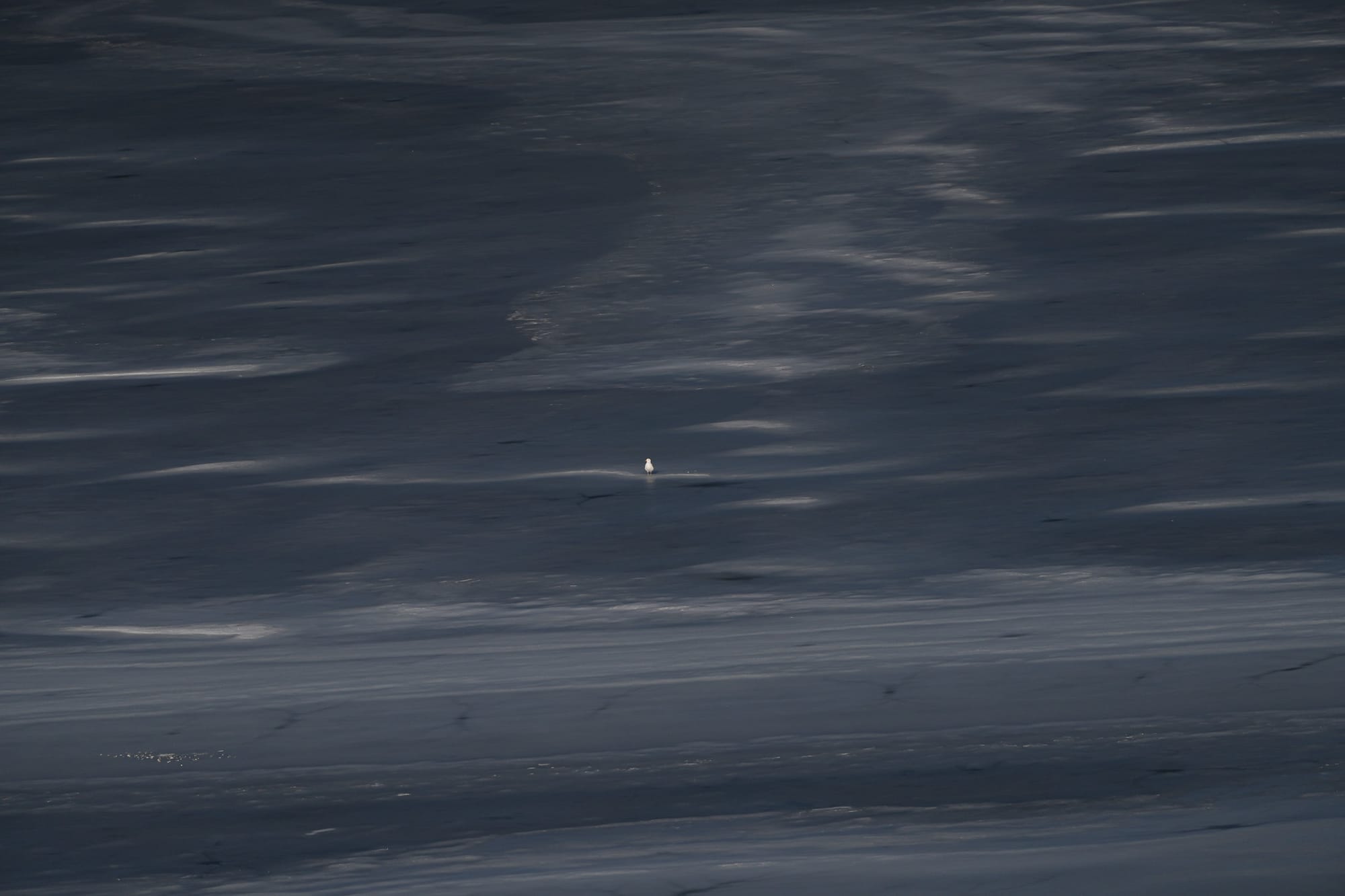
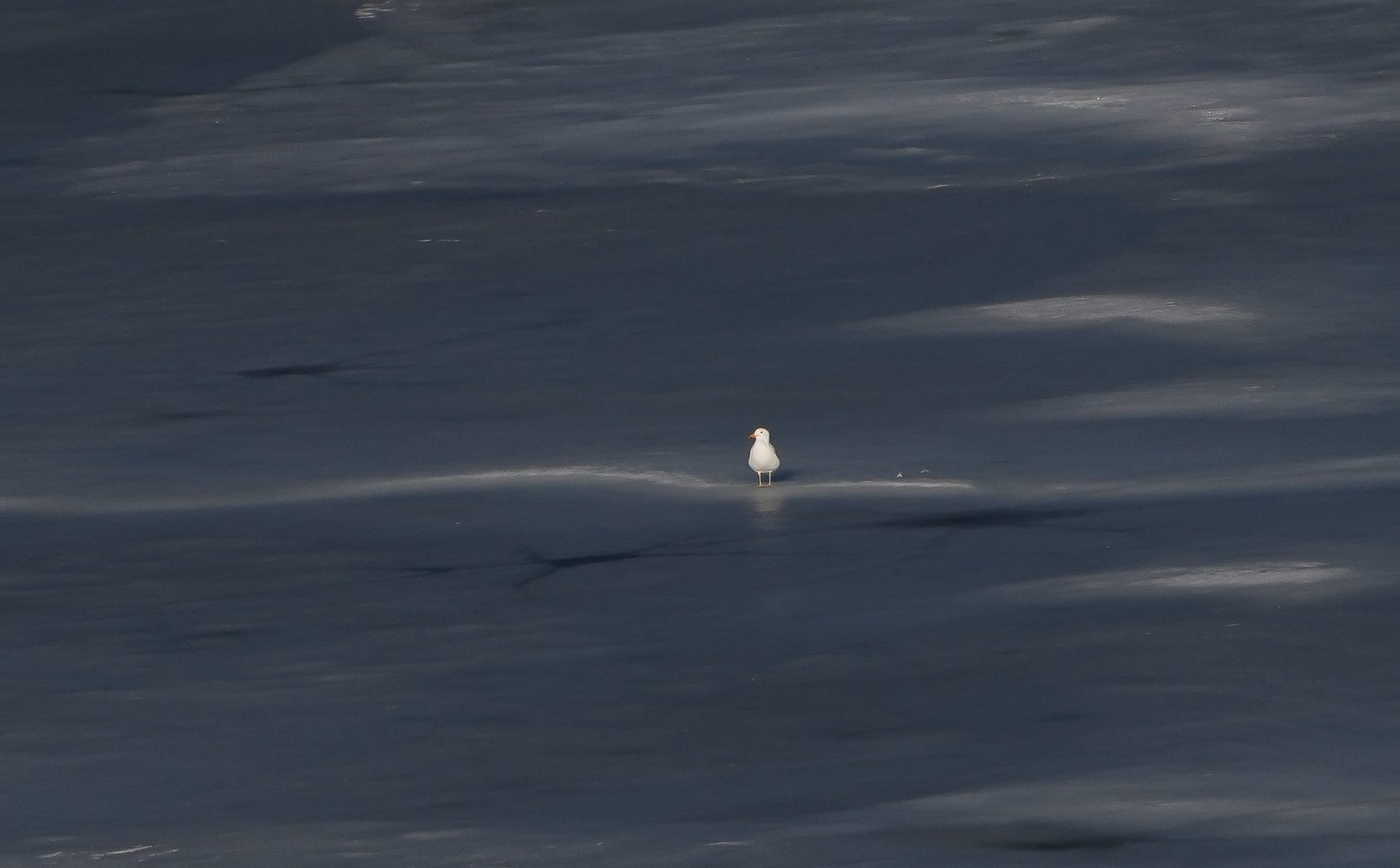
It was remarkable to see a single gull sitting by itself on the ice. Photos by David Lukas
Another awesome sighting was the rediscovery of a rusty blackbird that was first reported earlier this winter near Carlton. These birds breed across Canada, but then winter in the southeastern United States, so it seems like this bird got lost and decided to spend the winter with us instead.
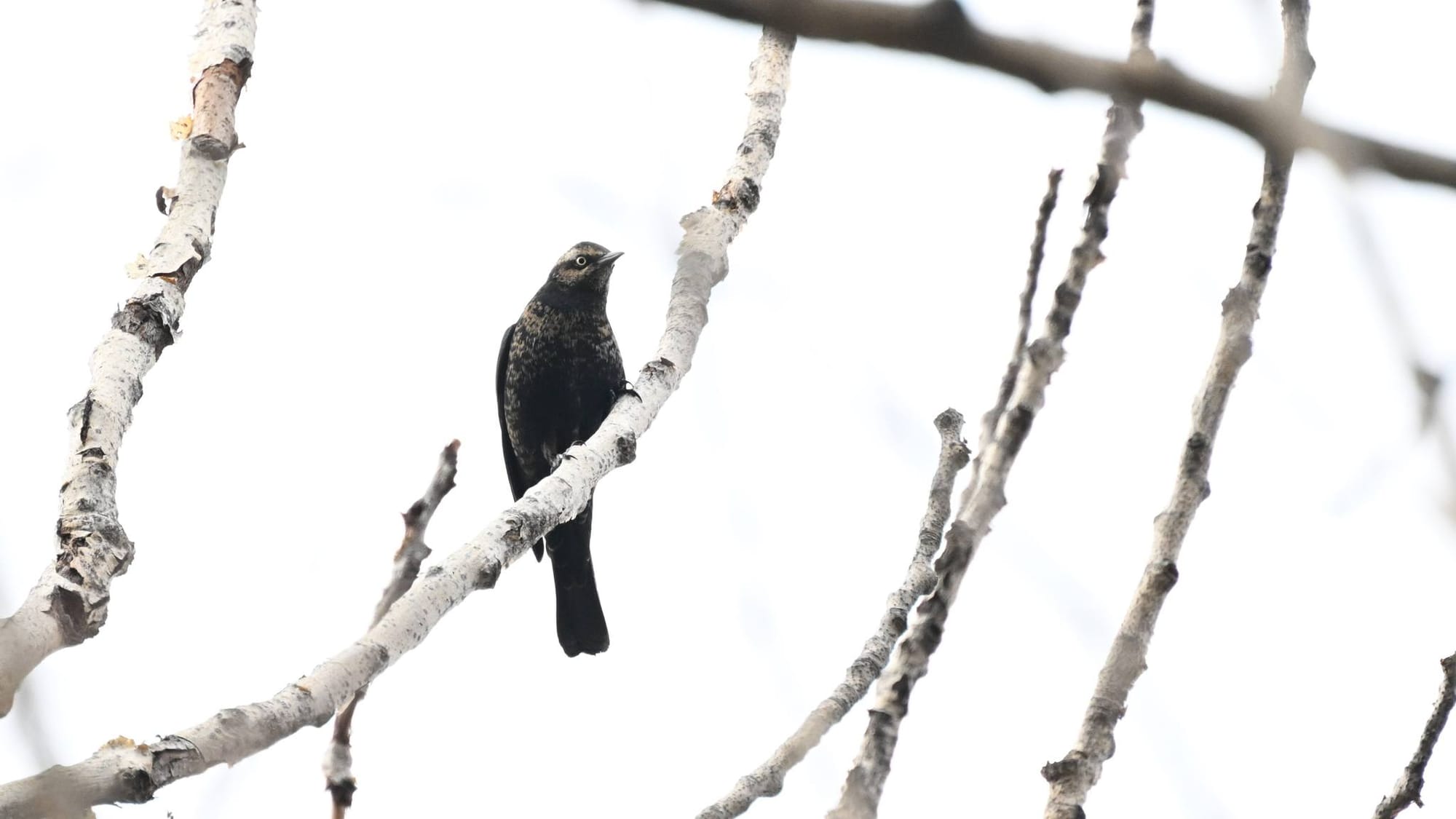
There were many other signs of birds becoming more active this week. For instance, I noticed a pair of pileated woodpeckers flying through our yard then continuing to fly a very long distance across vast hillsides of shrubs. I don't know what this means, but it was a lot of energy and a strange behavior for these reclusive forest-dwelling birds.
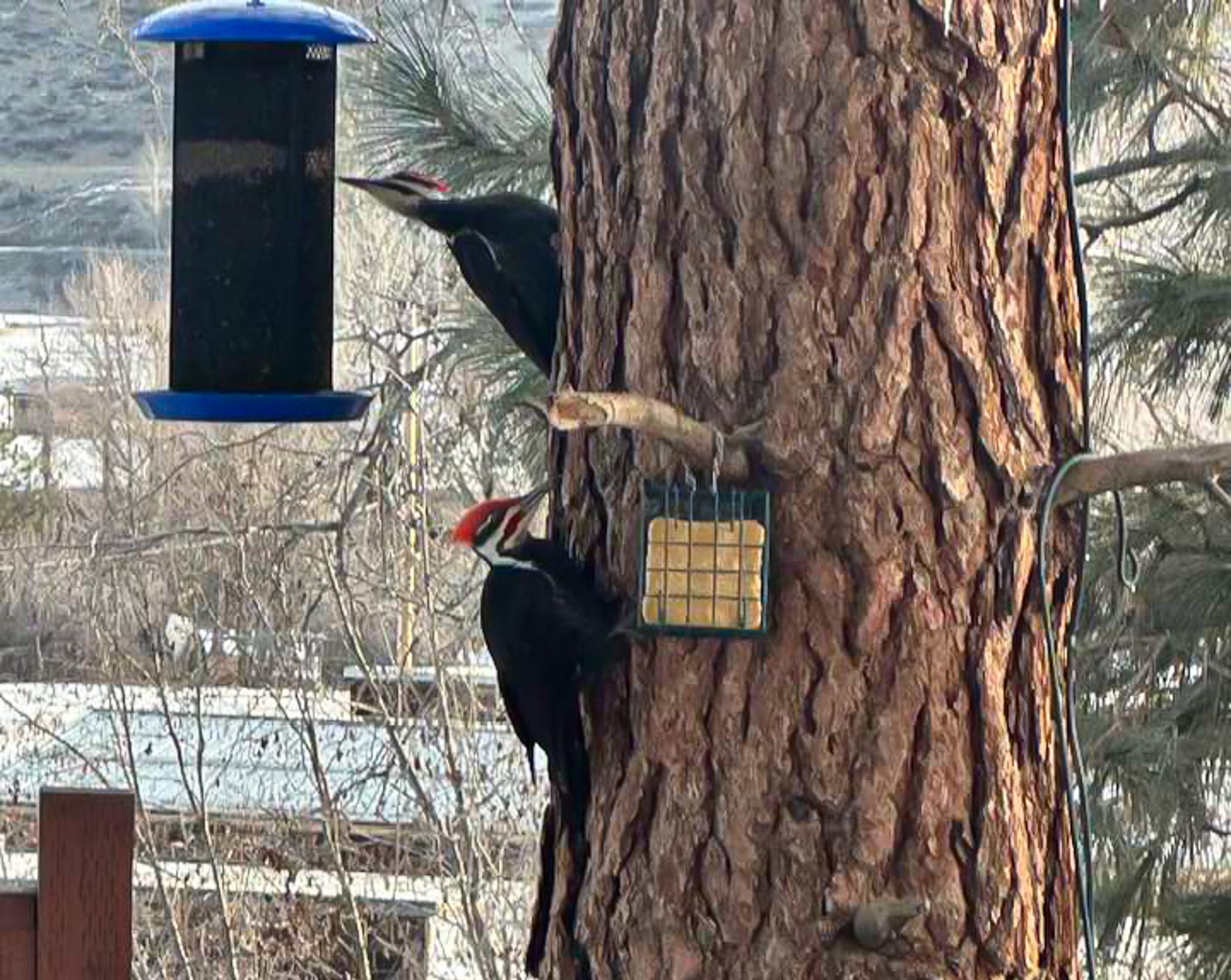
This week I also heard something I've never heard before—a singing northern shrike! We only see these birds as winter visitors, so it had never crossed my mind that they sing, but this bird was clearly feeling good about the coming season.
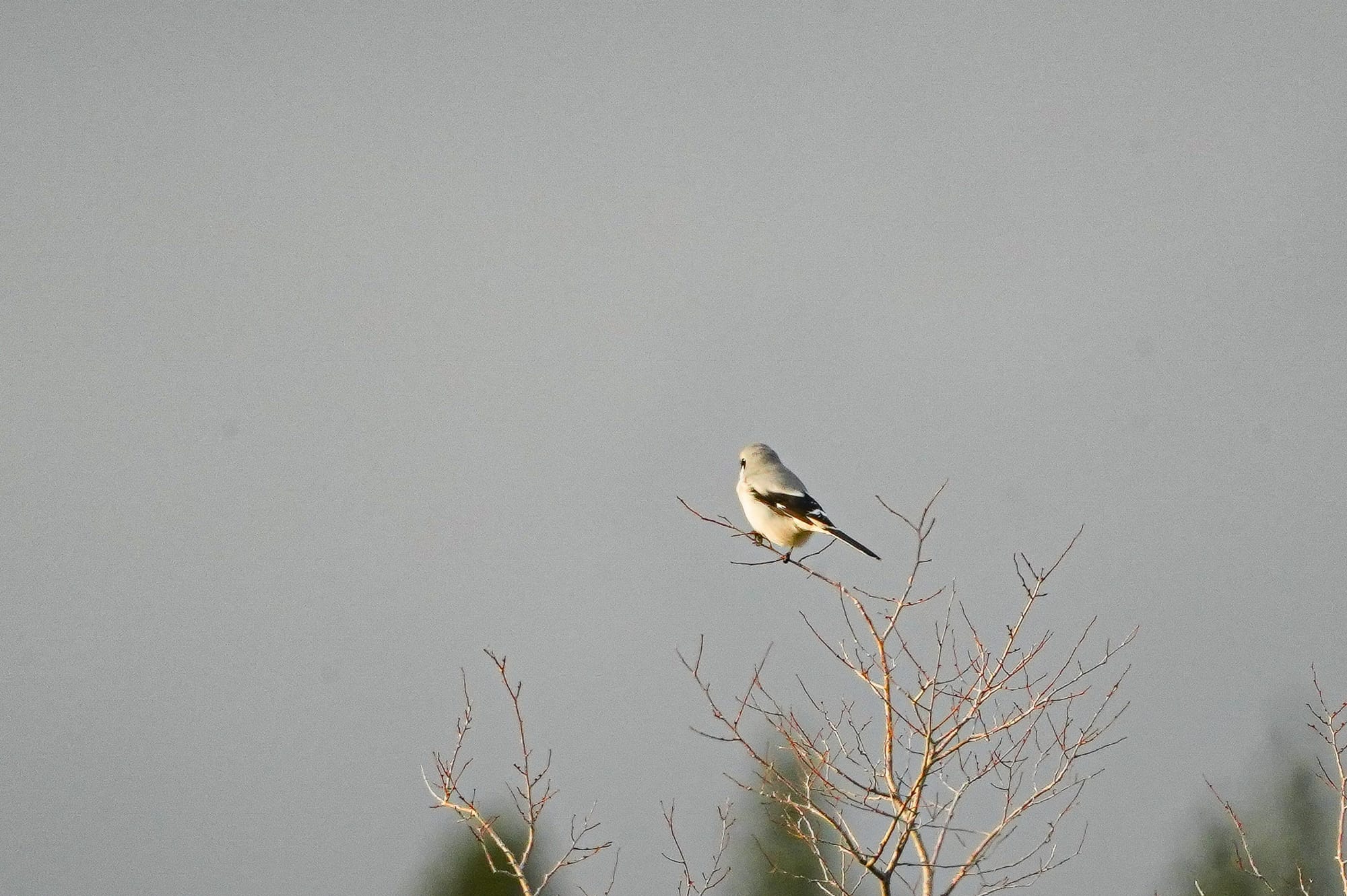
Hawks and eagles and ravens are also feeling good about the coming spring. Every time I look up it seems like I see pairs or small groups of these large birds circling and dogfighting in the air. These are early signs of territoriality and courtship and it's exhilarating to watch them play over big open spaces like this.
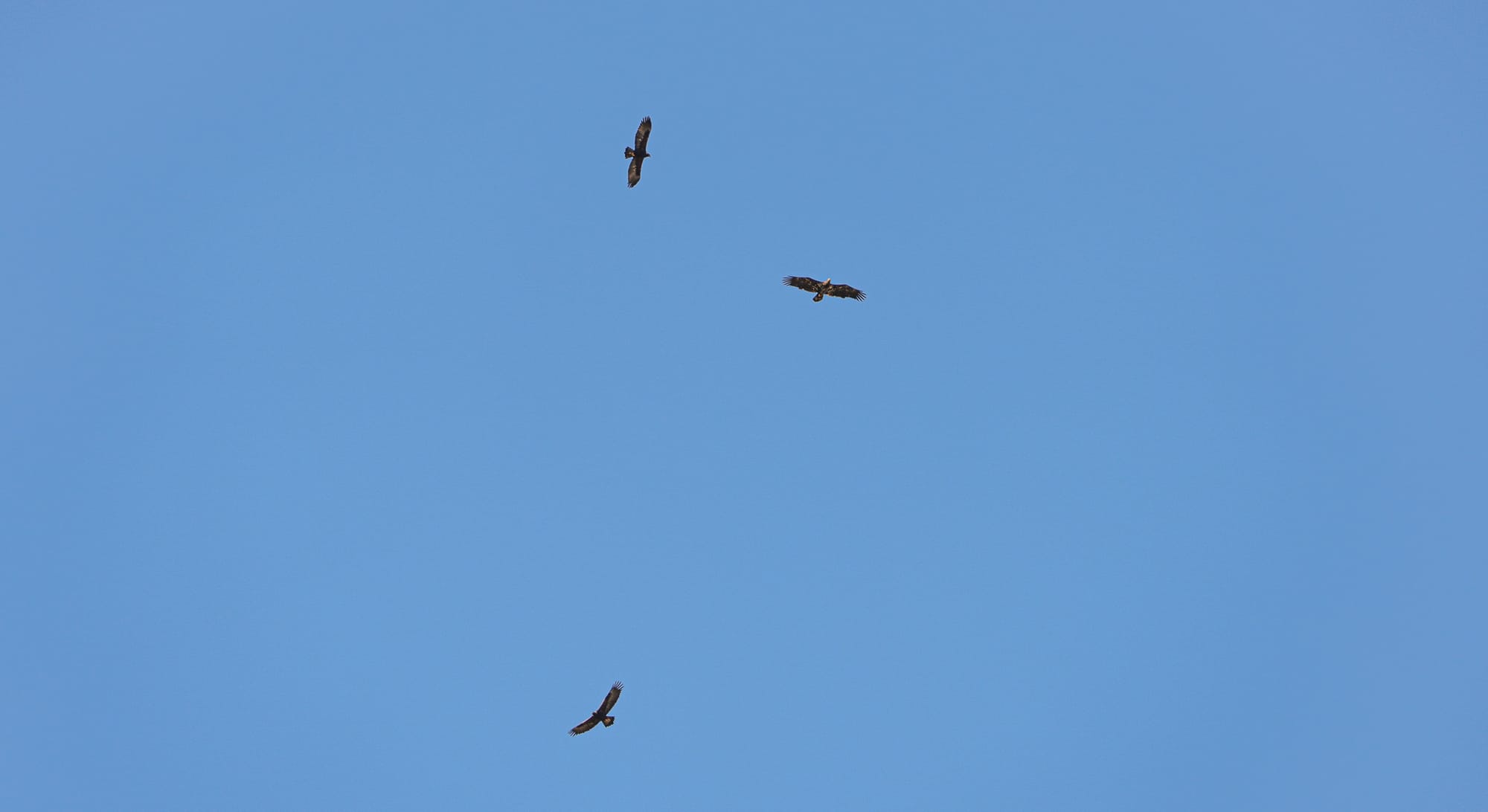
And finally, in a sign that spring is truly on its way...we have the first flower of the year, a sagebrush buttercup found in the lower Methow Valley. A harbinger of things to come!
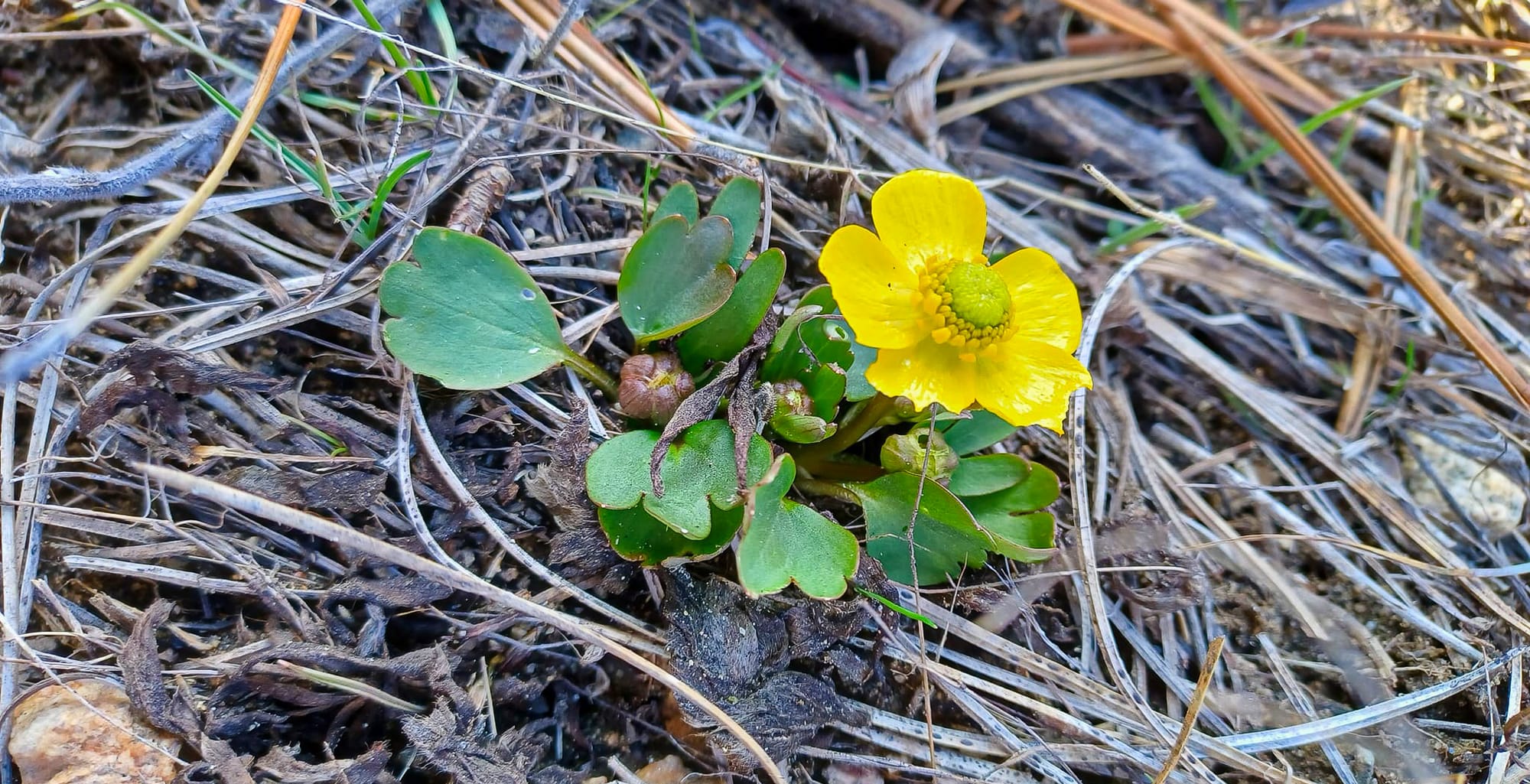
Observation of the Week: Painted Turtles
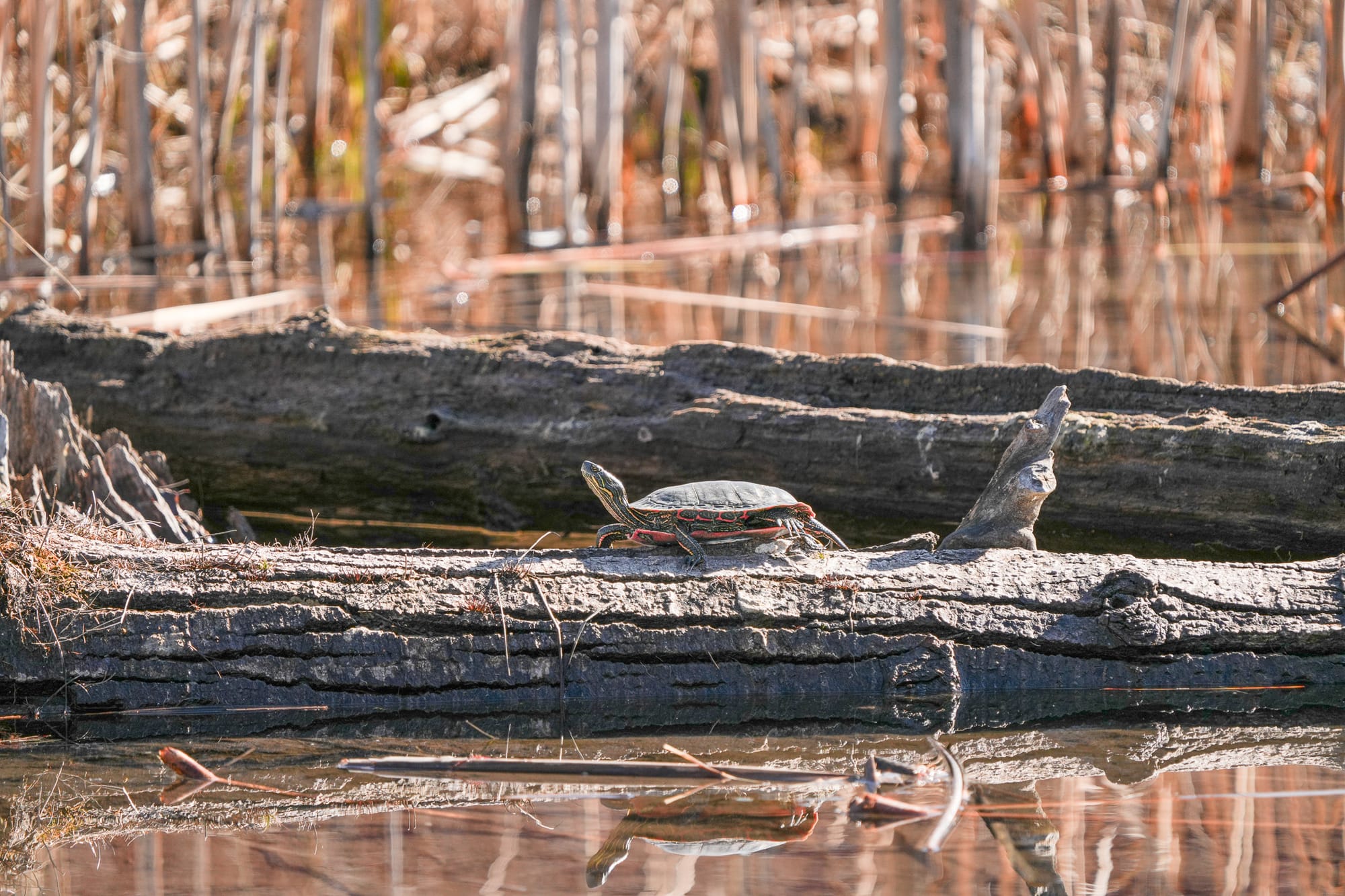
To my complete surprise and delight, I discovered several painted turtles this week. They were sunning themselves on logs on a warm day (February 23), even though many ponds are still partly frozen over.
Painted turtles may be the most widespread and adaptable turtles in North America. They range from the Gulf of Mexico into southern Canada and are able to tolerate both frigid winters and short summers.
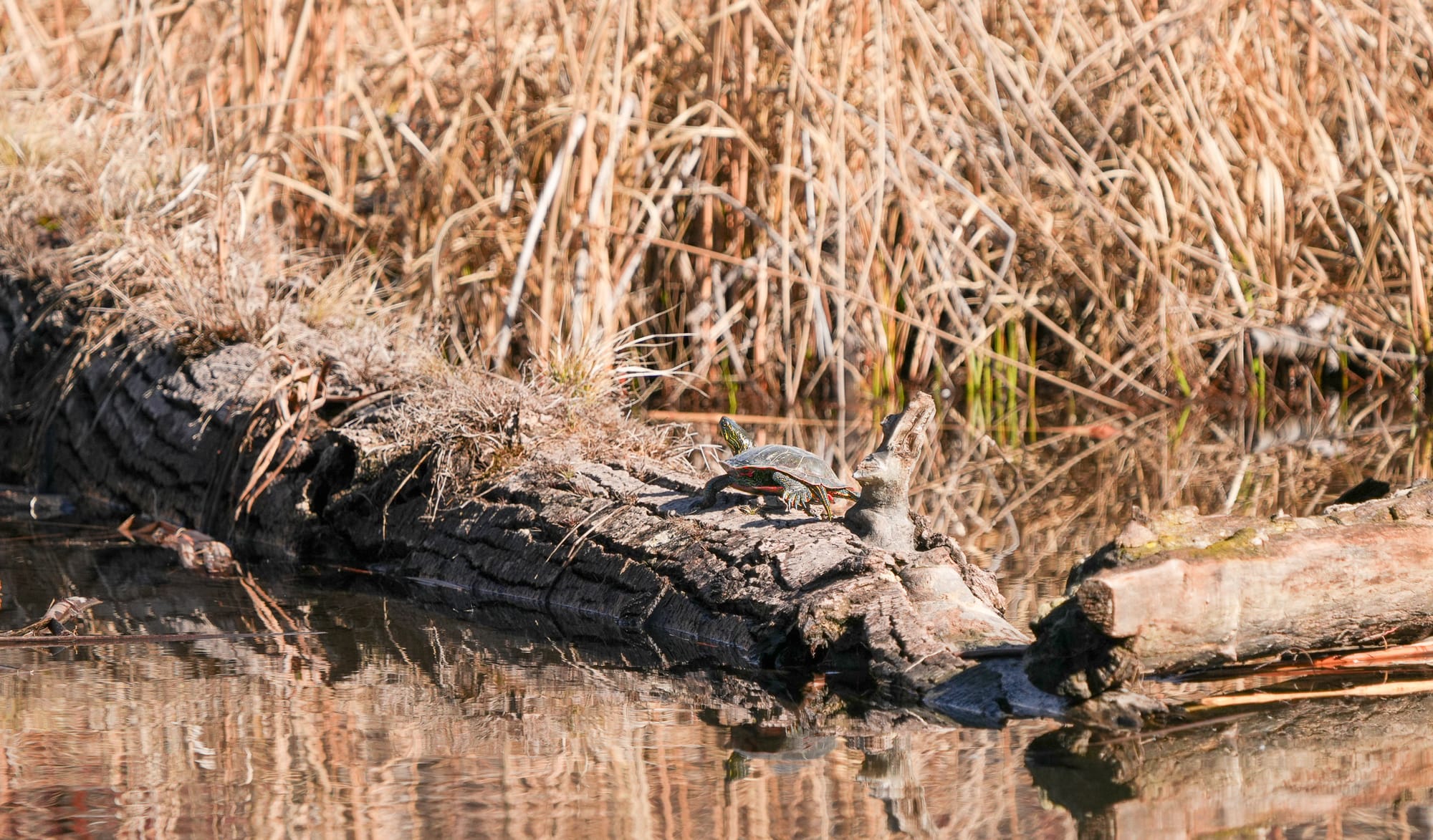
Painted turtles overwinter in the mud at the bottom of shallow ponds, often close to shore where the water is shallowest. Being in shallow water enables them to warm up faster in the spring and get a jumpstart on the fleeting days of summer. They are also known to become active in February or March, or as soon as ice begins to melt and expose open water. In fact, it's possible to see them swimming under the ice.
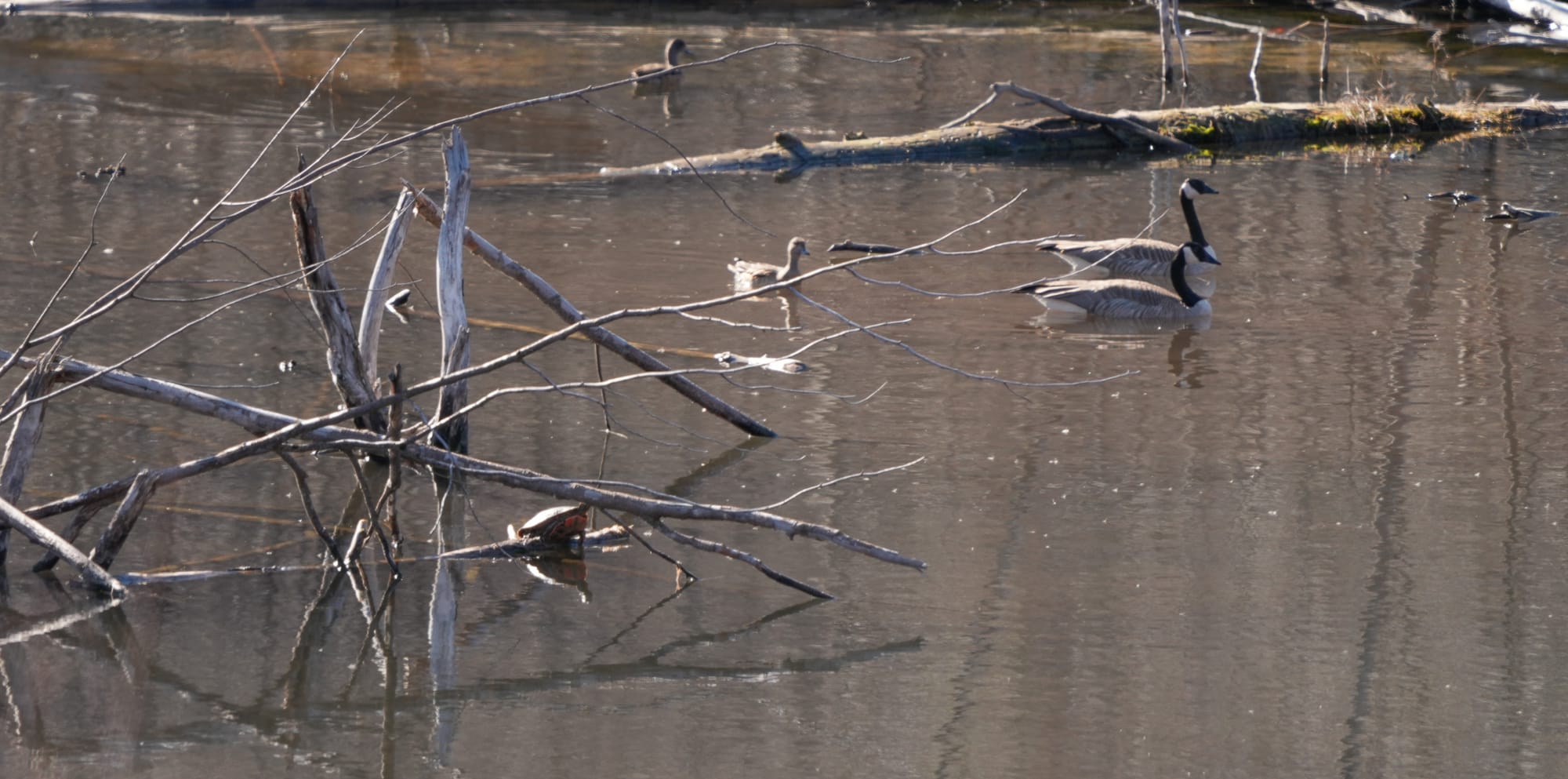
It's amazing that painted turtles breathe air with their lungs but still spend 5-6 months buried in mud under ice-covered ponds. It is thought that they absorb some oxygen through their skin, but over the winter all the oxygen at the bottom of a pond is used up by other organisms so turtles switch to anaerobic respiration and survive by breaking carbohydrates into lactic acid. This creates a toxic build-up of lactic acid, but they are able to neutralize these acids with the large amount of calcium stored in their shells.
These turtles really are remarkable!

